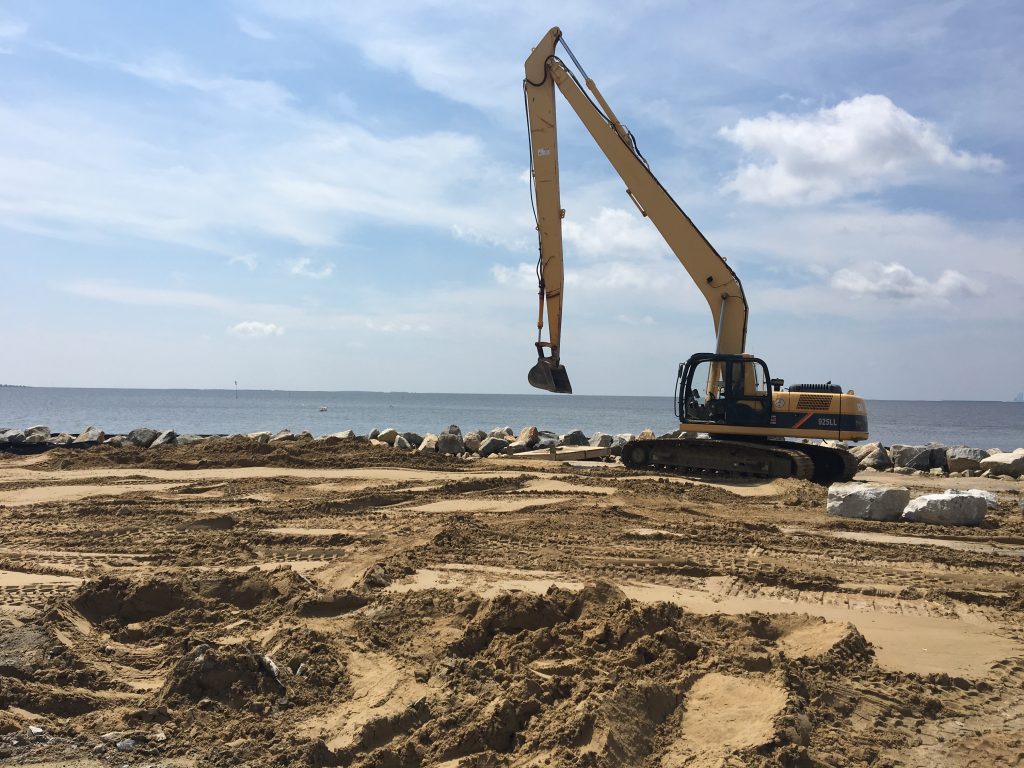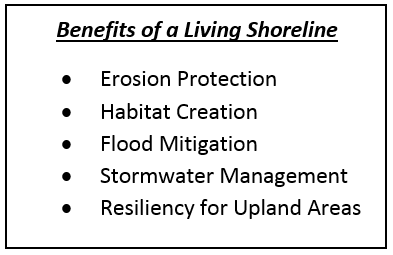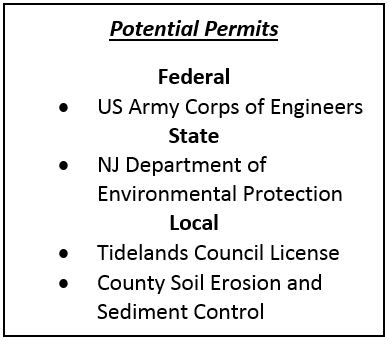 Facing the threat of storm damage from hurricanes coupled with sea-level rise and king tides, there is no time like the present to think about reinforcing our shorelines.
Facing the threat of storm damage from hurricanes coupled with sea-level rise and king tides, there is no time like the present to think about reinforcing our shorelines.
One step communities can take to reinforce existing shorelines is by constructing living shorelines. These come in all shapes and sizes, from the 90 LF stabilization sill at Gardner’s Basin in Atlantic City, to the 760 LF site nearly complete at Iowa Court in Little Egg Harbor, NJ. Finding the right combination of natural, hybrid, or structural elements to restore, protect and enhance a site is vital to the success of the project.
At Iowa Court, a tidally impacted salt water marsh, the combination of timber sheeting and stone breakwater will help to reduce the inundation energy and extend the shoreline to match the shoreline as shown on the 1977 Tidelands Map. Following placement of the stone, the area will be filled with clean sand and planted with Spartina plugs. As the breakwater is completed, spat-on-shell will be placed along the stone to establish oyster habitat. The cul-de-sac will also feature a sign to educate the public about living shorelines and a bench for visual access to the water and tidal marsh habitat.

When considering a living shoreline project it is important to understand the timeline for planning, permitting, and construction. This can vary considerably depending on scope, land ownership, site access, and constraints such as seasonal in-water work restrictions. Following completion of the project there may also be monitoring requirements as a result of approved permits. In addition, adaptive management may be required for several seasons following construction to ensure vegetation and habitats become well established.


